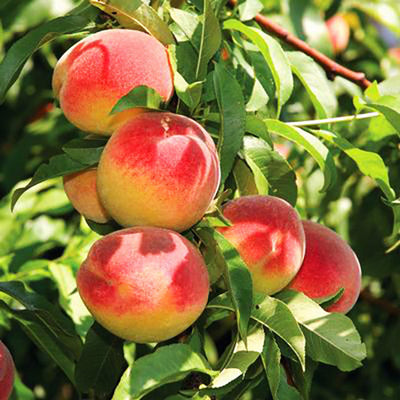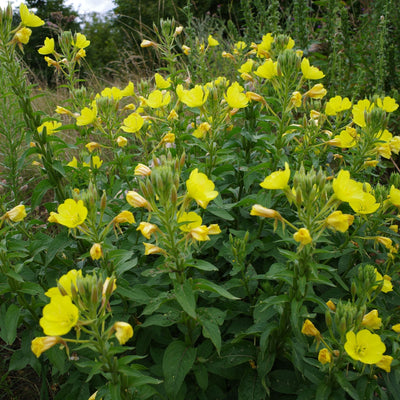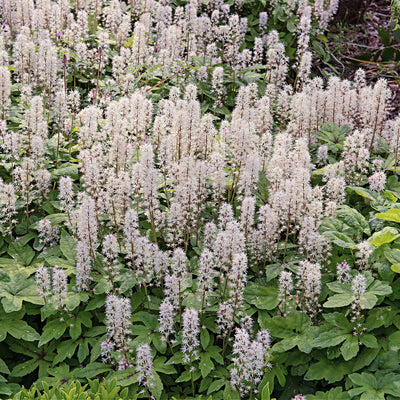What to Know About Fruiting Peach Trees
They are unique treasures to any garden and orchard to behold, complemented with spring blossoms and providing rich shade during summer due to their foliage. It brings insurmountable pleasure to gather and take home fresh fragrant peaches. Peach trees are very easy to take care of. Even to novice professionals, they do not pose any complex challenges. Most of phytes prefer growing them due to their availability due to climate reasons.
Prunus persica, part of the Rosaceae family is the peach tree’s unique scientific name. This family is believed to have originated from the northwestern part of China. They do very well in temperate climate surroundings. For that, the world blossoms peach trees with scent from early spring and during summer. They have the wonderful ability to turn from rich essences of crimson to vibrant yellows during the summer and blossom once again in the late summer. This article is constructed to provide in-depth information about the planting, nurturing, and pruning of peach trees.
Planting and Caring for a Fruiting Peach Tree
Peach trees can serve as a source of food for many years if planted and taken care of properly and under the right conditions. Here are some suggestions for optimal growing conditions for peach trees:
Changes in Position and Soil
One of the preparation checklist items for a peach tree is selecting the right spot for your tree. It is ideal if the tree can get sunlight for 6 hours a day. It is impossible for the tree to fully develop and yield any fruits without sunlight. Peach trees are among the most hardy and can survive a range of growing conditions including pH levels and a wide variety of soil conditions. Ideally, the soil should not be too waterlogged and should be a bit acidic to neutral in pH.
Planting and Spacing
Due to the necessity of moisture for a peach tree, the sapling should be adequately watered after planting. After moisture is retained, enough soil should be surrounding the roots to allow for unrestricted growth. For proper circulation, the trees should be spaced at least 15-20 feet apart. The fungi that tend to grow on trees is much less likely to spread to trees that are spaced apart as there is less competition and more sunlight from all angles.
Watering
Peach trees should not be missing water and especially so during the dry and fruiting seasons. Small trees require around five gallons each week while grown trees are watered during the hotter summer months. Placing mulch around the tree will seal in the moisture and reduce the moisture which can be detrimental during the rest of the growing season. Do not cover the base of the tree to prevent the chance of bacteria growing on the peach tree.
Fertilizing
Peppertrees require fertilizing. The balanced types with equal parts of nitrogen, phosphorus and potassium in the lead of spring and summer will help. Take care not to use too much, as it will promote thief and imbalance the tree.
Improving Peach Yield Through Pruning
When it comes to taking care of a peach tree, pruning goes hand in hand with other tree care techniques. With peach trees, pruning them in a certain way a provides better circulation in the tree, increases their fruit production, and shapes them. Since peach trees tend to produce fruit on one-year-old wood, it is essential to prune them to a certain extent, and to do it frequently, in order to promote new growth. Pruning should be done as late as mid winter to as early as the period in late spring dew point passes to avoid frost.
To assist in improving success with the tree, consider the following:
Take out broken and dead limbs
Any broken limbs, or limbs that show any other signs of being sick, should be trimmed off or cut out.
Remove limbs in the way
Take out the excess limbs from the crown of the tree that are blocking the sun.
Work on old wood
The older the wood is, the plastic more go, wood that has been fruit bearing and pliable should be removed to encourage new wood.
The best way to shape a peach tree is open-center, chambered, shapely like a vase. By keeping the peach tree and open centered shape, it is able to sunburn or sun settle evenly, causing the tree to ripen all at one time. The T Think Smf Loosely The T's. The Smt Wsh is Sm do som, wl Or Sn. the Boa.
Common Problems and Solution of Peach Tree
Taking care of peach trees comes easy, and as with any other type of tree, there will always be issues with pests and diseases. However, problems could arise with any of the below mentioned.
Peach Leaf Curl
Peach leaf curl is a fungal disease that causes folds, changes leaves to rabid, and them to lose proper growth direction. To avoid peach leaf curl, apply a form of fungicide. Make sure to apply the fungicide before any swells begin to form and do the application in a period of inactivity.
Brown Rot
Brown rot is a disease that can occur on tree that is close to other fruit trees, especially in the rain. To lower the chances of brown rot, cut the tree to form a ‘V’ shape and do not that density is loss. If brown rot occurs, take care of decreasing the chances of other types of rot and do prunes.
Peach Tree Borers
Peach tree borers should be lifted when the sun is hottest and can be very harmful. If they do manageable damage, ensure the tree is healthy and take lots of care of it, once the tree is healthy the borers should be managed. If the tree has larger damage, use the required form of chemicals to recover the tree.
Savoring Sweet and Juicy Homegrown Peaches
One of the most rewarding aspects of having the trees themselves is the fruit on them. People can usually tell a peach is ripe when the desired fruit is soft to the touch and translucent with a yellow skin with a rosy blush on the sunny side. When the peaches ripen, they are typically at their best and ready to be savored. To get ready for the rest of the snacks, you can also opt for canning, freezing, or sometimes even drying them.
Homegrown peaches are simply the best for smoothies, jams, pies and so much more, once the fruits are picked, all that is left to do is put them into the desired delicacy and enjoy it to the fullest.
Native Perennials to Complement Your Peach Tree Garden
Peach trees are great on their own, however, having other native perennials brings diversity and wildlife to the area. Some of the native perennials to plant to help the area are sundrops or (Oenothera fruticosa), which are bright yellow flowers that bloom in the day and attract bees, and even butterflies.
Another great native perennial plant you can use is foam flower or (Tiarella cordifolia), which has stunning pink or white flowers and thrives in the shade while hugging the ground.
Tradescantia Virginiana: Spiderwort
Spiderwort is a hard perennial that is well known for its brilliant purple flowers, and is also able to attract bees and other pollinators.
Why Apple Trees Should be Planted in Your Garden?
The possibility of growing peach trees in one’s garden comes with multifaceted benefits as they are also beautiful to look at. This also brings in a wide range of pollinators which contribute to the positive insect balance of the garden while providing shelter to the garden making it pleasant to spend time outside during the harsh summer months. Besides, growing peach trees will reduce the level of dependency on peaches which are commercially sold and full of chemical sprays.
However, for families, growing peach trees is an invaluable educational tool. Children are able to be taught about the food and the importance of gardening in a sustainable manner. Grown in an orchard or backyard, they offer a level of accomplishment and sense of nature helping to cultivate and connect to.
Together with native perennials, peach trees attract pollinators and other wildlife bringing the sweet reward of homegrown peaches.
Set to Cultivate Your Own Fruiting Peach Tree?
Do you wish to nurture a peach tree and relish the satisfaction of homegrown peaches? If so, you can find quality peach trees and a plethora of other plants to help you design the garden of your dreams online at TN Nursery, Your Online Nursery Store. TN Nursery has expert garden help and ample quality plants to assist you, from the beginning to mastery, in your gardening adventure.
FAQs
At what age does a peach tree start bearing fruits?
A peach tree takes around 3 to 4 years after planting to start bearing fruits, and a tree can take 4 to 6 years to fully take off. This will all depend on the variety of the tree, the weather conditions, and the care taken. Some trees grown in more favorable conditions may bear fruits earlier.
What can I do, so that my peach tree start bearing fruits?
If you want to encourage peach tree to bear fruits, you must make sure to meet the peach tree requirements to grow. This means that you must not let a peach tree lack 6 hours of sun a day, do not let the peach tree lack water, and do not let the peach tree lack fertilizer in the growing season. Prune the tree to get rid of dead and more limb branches.
Do I need to have two peach trees, so that they can produce fruits?
No, most trees can pollinate themselves. Therefore, a single peach tree is more than enough. However, having more than one tree is beneficial, as it increases the chances of cross pollination which may lead to higher yields and fruit quality.
What is the best way to take care of a peach tree?
Make sure the tree is in the full sun, and that the soil drains well, and isn’t soggy. Water the tree regularly, especially during periods of drought, and mulch the base of the tree to minimize evaporation. Make sure to prune the tree each year to reduce any dead and defective branches, to encourage better air circulation, and to better the chances of the tree making fruit to focus on. Also, the tree will need some fertilizer in order for the tree to thrive during the growing season.
Do you need to prune a peach tree every year?
A peach tree unlike other types of tree, needs to be pruned every year of its life, in order to keep it strong, as well and healthy as its shape and quantity of fruit produced. It is best to prune during dusk season. In this particular case, its from late winter to early spring. In order to restrict growth, pruning helps to defines portions of the tree, trim dead and broken branches, and rearranges the crown of the tree for maximum direct and other fruits production.
What are the five rules of pruning?
The first rule of pruning is the Dr. Seuss principle: Don't increase the problems you have. To keep the plants healthy, dont start pruning on the areas where there's dead or diseased wood. Most of the time, one dead wood will have one healthy wood on the other side. First rule, use the right tool or you’ll more. Second rule, let some trees go and use all of the pruning on one. Doing one tree has better airflow, cuts the workload in half, and then you can let the other tree grow back. They all can get better sunlight. Shape the trees for the best airflow and good structure. The fourth rule is cuts max at 45 degrees. You are encouraging the tree to grow, so go all the way. Fifth rule, go in the winters and springs. You also want to go out in the winters and the eRy spring because the trees go to sleep then.




